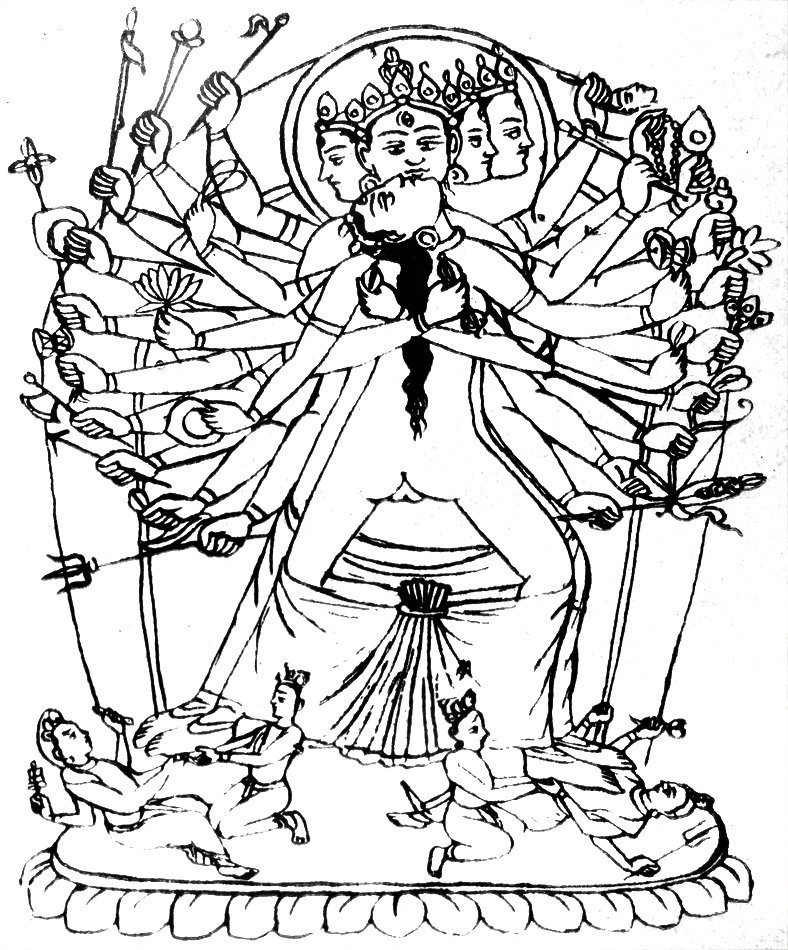The Indian Buddhist Iconography
by Benoytosh Bhattachacharyya | 1958 | 51,392 words | ISBN-10: 8173053138 | ISBN-13: 9788173053139
This page contains an iconography image of Emanations of Akshobhya: Kalacakra and represents figure 134 of the book Indian Buddhist Iconography, based on extracts of the Sadhanamala English translation. These plates and illustrations represent either photographs of sculptures or line-drawing reproductions of paintings or other representations of Buddhist artwork.
Figure 134 - Emanations of Akṣobhya: Kālacakra

Figure 134: Kālacakra
(Nepalese drawing)
Kālacakra is the principal deity in the Kālacakra Maṇḍala of the Niṣpannayogāvalī. The famous Tantra of the Buddhists called the Kālacakra Tantra introduces the cult of Kālacakra into Buddhism. Vimalaprabhā is the commentary on the Kālacakra Tantra which is referred to in the Niṣpannayogāvalī. It is thus probable that the cult of Kālacakra came into vogue in the 10th century. According to the Kālacakra Tantra, the cult was given the name of Ādibuddhayāna or Ādiyāna. From the Vimalaprabhā it is evident that by introducing the worship of Kālacakra, the circle of time, an attempt was made to bring the warring communities of the Hindus and the Buddhists under the same banner, and unite them against the cultural penetration of the Mlecchas from the Western borders of India where the followers of Islam were daily growing strong and were destroying old and ancient civilizations.
The form of Kālacakra as described in the Niṣpannayogāvalī is elaborate and somewhat grotesque.
Kālacakra is known to the Chinese collection and a presentation of his form is given in the Two Lamaistic Pantheons. Images or paintings of Kālacakra are rarely found in India. He is popular in Tibet as well as in China. Fig. 134 illustrates a Nepalese drawing of Kālacakra. The blue colour of the god suggests that his spiritual sire is Akṣobhya.
Colour: blue;
Faces: four;
Arms: twenty-four;
